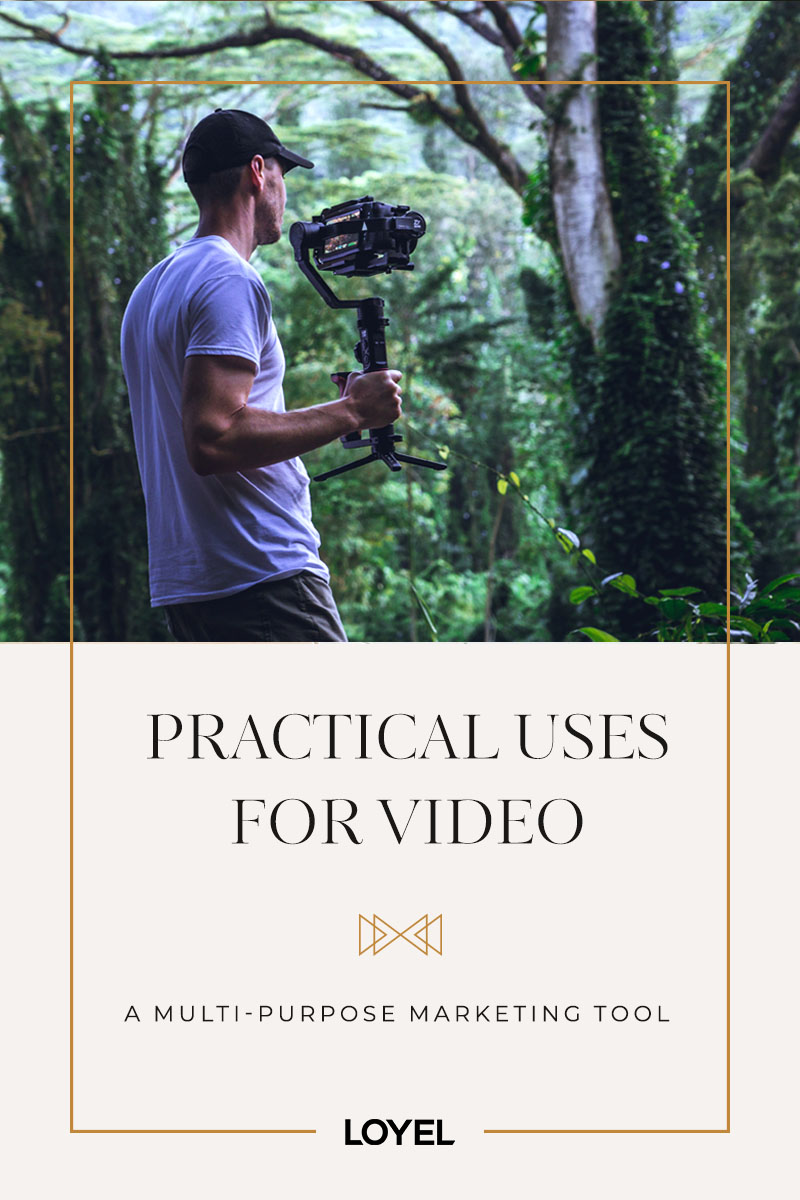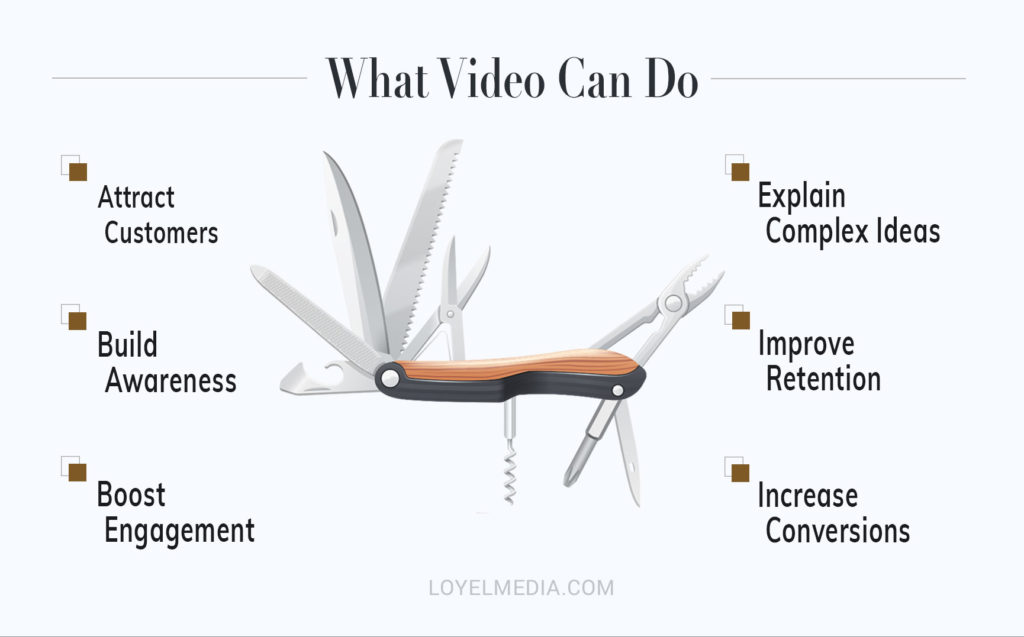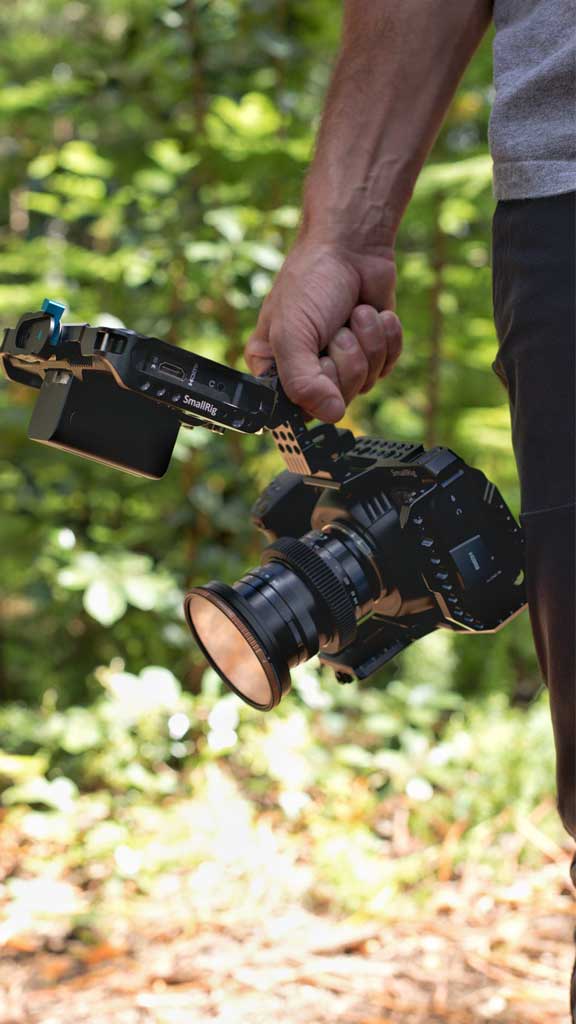When promoting your business, one of the most versatile tools you can use is video. Why does it work? To understand its strengths, look to the Swiss Army knife—a handy survival tool, known for over a century for its usefulness and adaptability.

Much like the Swiss Army knife, video provides workable solutions that can help you tackle everyday problems.
It’s a multi-purpose tool that allows you to promote your business in more ways with more impact than any other form of media. That’s why video in your pocket provides you with a lot of practical options to get your message across.
A Commonsense Approach to Using Video
As a medium, video continues to evolve, with increases in bandwidth (the amount of data that can be transmitted) contributing to a rise in its use. Plus, as it’s gained popularity, marketing platforms have prioritized it, which, in turn, has widened its influence across more channels.
Video benefits both businesses and consumers—and this has grown significantly, too. It’s accessible and seamlessly integrated across digital channels. In short, it’s an extremely valuable tool in your marketing toolbox.
What Video Can Do for You
Video can deliver a lot of bang for your buck. It’s as simple as that. It allows you to communicate with your customers in more direct ways than you might with any other medium.
Consumers not only prefer it when making buying decisions; they’ve also come to expect it.
It can boost the impact of your other marketing efforts and you can use it, with excellent results, to:
- Attract customers
- Drive awareness and interest in your business
- Boost engagement for your content
- Communicate complex ideas
- Hold your prospects’ attention longer
- Generate excitement
- Increase conversion rates.
How and Where to Use Video
It can help your customers learn more about the products and services your company offers—and in all kinds of ways.

Here are just a few of the more common places, or channels, where you can use video to make your business stand out, and engage with your customers on a deeper level:
- Your website
- Social media
- Online advertising
- Broadcast advertising
- Cinema advertising
- Email campaigns
- In-house marketing
- Trade shows and special events
- Sales presentations
How can video deliver maximum impact for your business? Well, that depends on what you want to accomplish with it.
[ Forbes: The evolution of digital marketing to video marketing ]
You can embed videos on your website to increase the amount of time visitors spend on your site, which also improves your site’s SEO (Search Engine Optimization) ranking.
You can also post videos to your social media channels to boost engagement and drive more visitors to your website, and you can include them in your email marketing campaigns to capture your readers’ interest and improve your click-through rates. It’s win-win, really.
Have you considered uploading a recruitment video to your company’s LinkedIn or Indeed pages, too? Or may you haven’t yet thought about the power of placing an ad at your local movie theatre to attract new employees.
You could also run a GoogleAds video campaign to promote a sale or event. The possibilities are endless.

There’s More Than One Type of Video, Too
Good videos can take on many forms; they grow from a thorough understanding of your business, audience, and message.
To ensure you’re getting the most from your video marketing, consider which type will help you deliver your message with the most impact.
These are just a few types of video that you can use to showcase your business:
Explainer
This type of video illustrates how your business solves a problem for your customers, by providing a broad explanation of the value that your products and services bring to the table.
How To
How-to-videos show how a product works or, how it can be used, but in a simple yet engaging way. They tend to follow steps in a logical order and answer an important question that your prospective customers have about products in your industry.
Promo
A promo video is a bit like a movie trailer for your business. It should get people excited about doing business with you. This type of video should be relatively short—say, under a minute. Quick edits and a forward-moving music track can help ramp up the impact of this type of video.
Testimonial
A well-made testimonial video may be one of most valuable pieces of content you can have on hand. It provides direct proof that your product is reliable and useful, including real-life customers that your audience can see, hear, and trust. Video can take your testimonial to a higher level.
Thought Leadership
To convey the history behind your company and the passion that drives its success, consider a thought leadership video. Owners or leaders can establish expertise, share knowledge, and bring context and credibility to your company’s story.
Brand
A brand video can humanize your teams and build those all-important, personal connections with your customers. It often highlights your company’s culture to tell your brand’s story—and this can benefit both consumers and potential new employees.
Each of these videos can stand on their own or, you can combine them to create what are known as hybrid videos.
You could, for example, opt to produce a thought leadership video that closes with a client testimonial. Or you could go for something else entirely.
Choosing the Right Video Style
Now that you’re familiar with the types of video that you can use, consider the different video styles. Choose a style that is practical for your business, useful to your audience and, communicates your message in the most convincing way. It’s important to note that you can combine video styles as well.
Live-Action
This style uses real people, footage, and photography to humanize your business and it’s the most popular style of video used today. It works well for testimonial and thought leadership, as well as how-to videos, when you’d like to show your product in action. It can be a challenge to alter a live-action video if you don’t have the footage to cover any updates further down the road. Still, with careful planning, a live-action video can remain relevant for quite a while.
Animated
When you need to deliver a story that communicates complex or abstract ideas, an animated style is a great choice. Animation can be effectively used to craft a narrative for your brand that taps into your audience’s emotions. This style also works well for an explainer video and is often used as a visual aid. There is some overlap between animated and motion graphics videos, but generally, animated videos are more story-driven.
When to Outsource Your Video Project
You can produce your projects in house or outsource them to a media production company. You’ll probably want to do a little of both. For everyday use, such as social media, videos shot with a smartphone or by a novice may be fine, but for more professional videos, you’ll want to consider using experts.

Where to Turn
A media production company will have professionals with the expertise, equipment, and specialty software to see your project through from start to finish. They can also advise you on the platforms where your video will have the most impact.
What to Consider
A poorly made video can work against what you are trying to achieve with your content marketing strategy. Talk with media production experts about creating visual content that supports your larger marketing goals and meets your business objectives.
There are times when a professionally produced video is required. For example, broadcast advertising. In this case, your final project must be optimized to meet industry standards.
Map Out a Plan
If all this sounds a bit overwhelming at first, don’t worry. You can start small and, with a little forethought, build up content as you go. Video use will only continue to grow. It’s more important that you start.
Review your current marketing strategy. Think about how you might introduce video elements that expand on the content you already have—say, on your website or social media—to make it more effective.
Use it to promote your business on an advertising platform you haven’t used before, such as YouTube to expand the ways audiences can tap into your content. Consider the different channels we touched on earlier.

Wrapping Up
Video has staying power. More and more businesses are opting to bring it on board to meet their customers’ expectations. People prefer it and stay engaged with it longer, and, most importantly, it converts viewers into customers more than any other form of media.
Video captures attention, draws your audience in, and increases engagement with your content—allowing you to communicate with your customers in the most direct, compelling, and impactful way.
Comments +